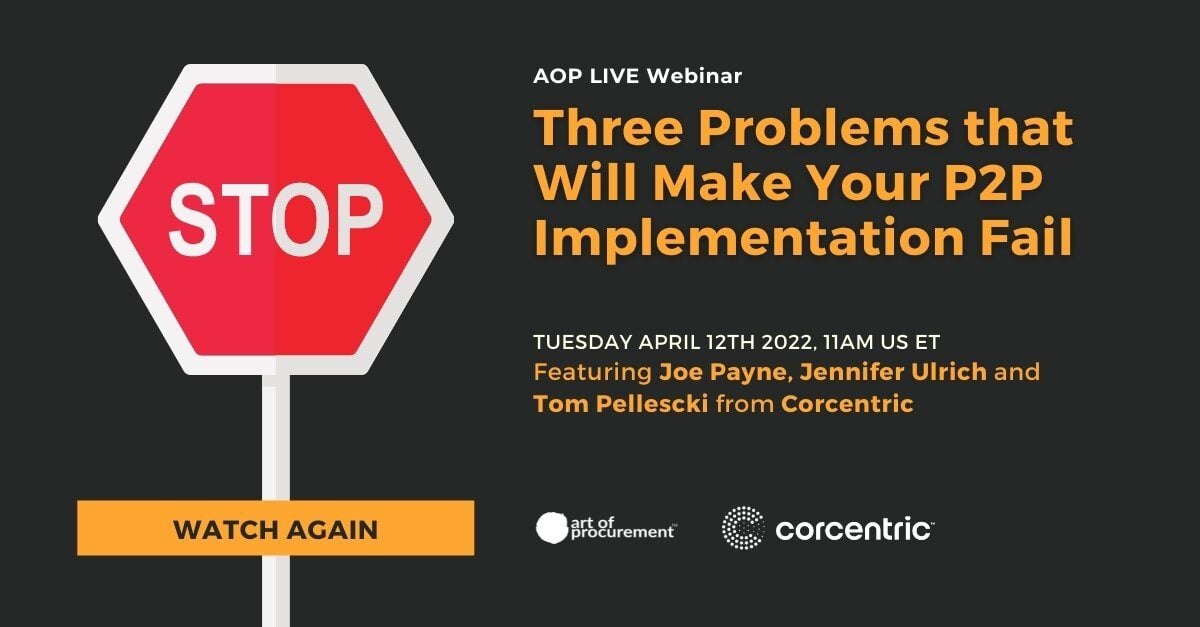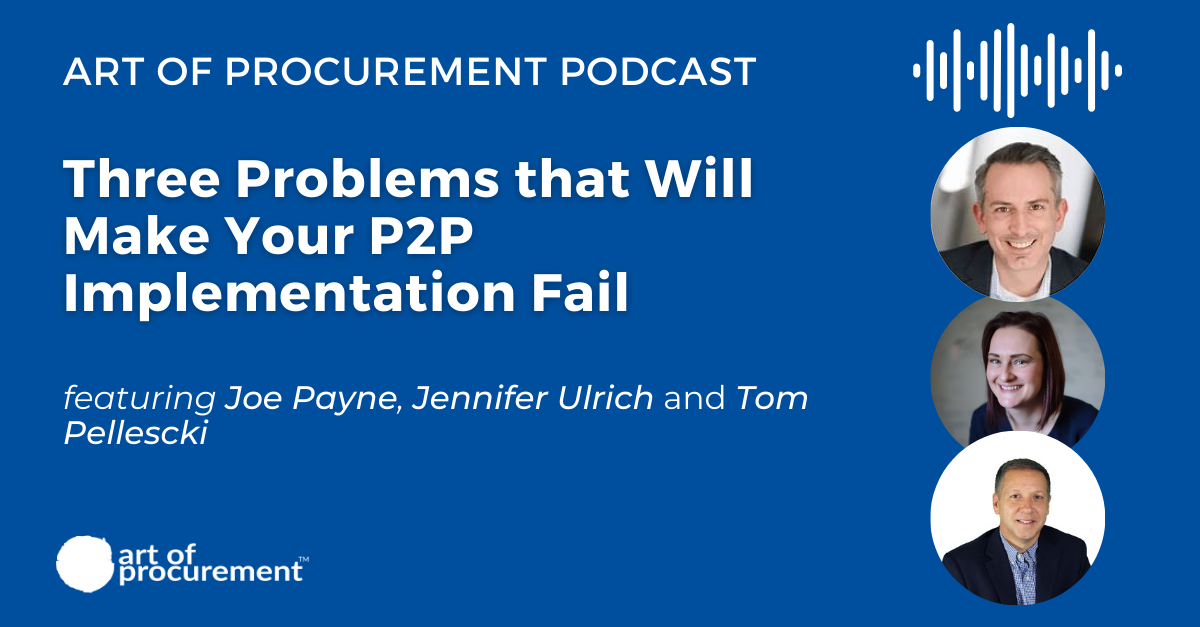
Art of Procurement recently welcomed the team from Corcentric for an AOP Live session on common P2P implementation failures. We were joined by Joe Payne, Senior Vice President of Source-to-Pay; Jennifer Ulrich, Senior Director of Advisory; and Tom Pellescki, – VP of Professional Services.
If you’ve ever attended an AOP Live session, you know they are different from the average webinar. We have no slides and the conversation is audience-driven. Another difference was on display in this particular session… Instead of making everyone wait until the last few minutes to hear juicy, real life examples of failure and lessons learned, we led with them!
Joe, Jennifer, and Tom each shared the biggest, most common P2P implementation-related failure they had experienced.
Forgetting the other P in P2P – Joe Payne
Almost every time we start a P2P implementation or the transformation of a procurement or accounts payable function, we see that people have forgotten what the letters stand for. It’s procure-to-pay, with 2 P’s.
When we have a procurement-led procure-to-pay transformation, very frequently procurement will dismiss the AP side of that equation – like the ingestion of invoices and the supplier management that is involved from accounts payable. When we start on the AP or finance side, we see a similar oversimplification towards procurement.
When I talk to procurement leaders after a transformation, and ask what they wish they had known beforehand, I hear how complex the AP side is. “I wish I had brought AP in earlier. I wish they were a partner with me on this transformation.”
When I talk to finance, it’s almost the opposite. Finance often goes in saying, “We’re going to fix our procurement process as part of this. We’re going to implement ‘no PO, no pay.’” Unfortunately, they don’t realize that implementing that type of change in an organization is not easy to do.
The biggest failure is not thinking about both sides of the P2P equation. The important takeaways are (1.) be collaborative – the implementation has to be a joint project between those two groups if they are separate today; and (2.) you need executive sponsorship. These are big projects with big changes. You need senior people involved to drive change and to get the project done right.
Working a Project Instead of Running a Program – Tom Pellescki
We see a lot of people implement P2P, get five catalogs put up, and think they are done. They never achieve the full ROI of the program. The main issue is that they treat the effort like it’s a project when it’s really a program.
They need to think of full P2P and how they are going to manage it once it is live. Despite the fact that this is a core part of their spend management strategy – managing the business and procurement and driving savings – they treat it like a project.
If you approach the effort as a program, you can think about the desired end state. ‘What do we need to do to keep enabling this as our processes change, our spend changes, we buy another company, we onboard more suppliers, to accommodate the evolution of technology?’ You need a team or a center of excellence focused on driving adoption and continuous improvement beyond those five catalogs you started with.
Moving Faster than the Business Can Make Informed Decisions – Jennifer Ulrich
Where I’ve seen companies go wrong is in the selection process. They either move too quickly and pick a solution that doesn’t necessarily meet the needs of their organization or, once they’ve made a selection, they jump in too quickly to roll it out.
This goes back to having a solid plan in place and making sure you have the right resources allocated. It is essential to make sure that you understand the processes you will impact with the new technology before you implement it.
When you make the decision to implement a solution like this, it is common for everybody to get really excited. They want to jump in and move quickly, but that’s where they go wrong. They realize almost immediately that they have not defined their requirements well enough up front. They buy the wrong tool and then they implement the tool poorly because they haven’t thought through all of the implications.
This all comes back to change management and project planning. You have to step back and make sure you have thought through all of the aspects of the implementation. You have to complete the planning before you start making decisions or implementing.
To find out how to guard your organization against these potential failures and more, watch Three Problems that Will Make Your P2P Implementation Fail on demand today!




